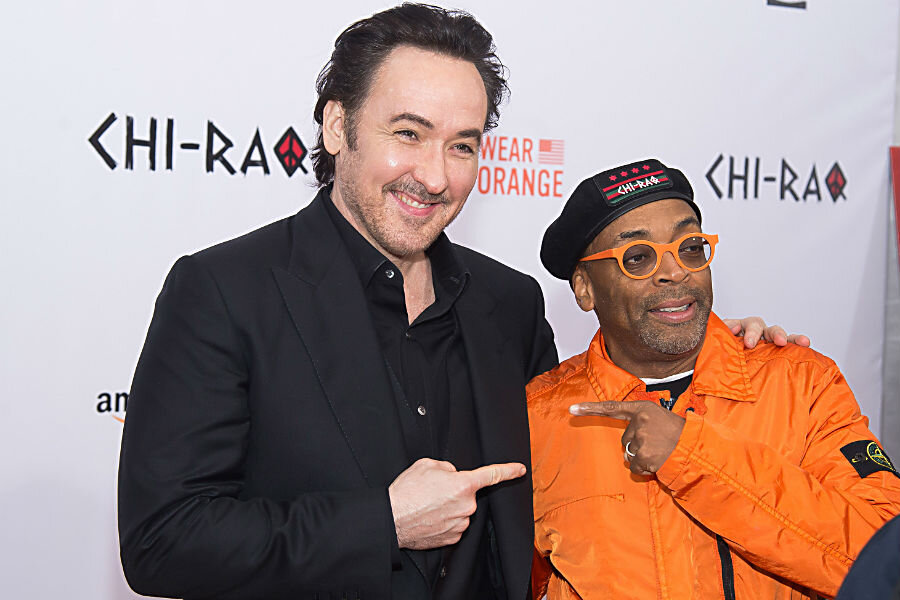Why Spike Lee wore orange to 'Chi-raq' movie premiere
Loading...
| New York
Kind words were in short supply for Chicago Mayor Rahm Emanuel at the premiere of Spike Lee's "Chi-Raq" on Tuesday night.
Emanuel fired the city's police superintendent Tuesday after tensions flared over the release of a graphic video that showed a black teenager, Laquan McDonald, being shot 16 times by a white police officer.
Lee predicted at the premiere, held before he and cast members participated in an anti-gun violence march, that "some more heads are gonna roll."
The police superintendent "is not going to be the only one," Lee said.
Lee's satire is based on the ancient Greek play "Lysistrata" by Aristophanes. This modern adaptation is about the murder of a child hit by a stray bullet in Chicago's South Side, and the group of women that organize a unique way of dealing with the ongoing violence; they hold back sex.
Chicago actor John Cusack, who appears in the film, said the shootings and killings in Chicago each year are "unacceptable," and cited political motives.
He said the police officer involved in shooting the 17-year-old wasn't charged or the superintendent fired until the city's election had passed. Emanuel won a second term earlier this year. The shooting took place in 2014.
"It's very tragic that information was suppressed for an election cycle," Cusack said.
The Rev. Al Sharpton, who walked the film's orange carpet before the premiere, said the power of the satire can send a message to young people about gun violence more than Tuesday's announcement in Chicago.
The movie's kickoff segued into the anti-gun violence march. Lee, Sharpton and members of the film's cast joined about 150 people who marched from a midtown theater to Times Square. Actor John Turturro, who isn't in the movie, marched with them.
Activists wore orange beanies with pompom tops. The color was chosen from the vests hunters wear as a "don't shoot me sign," said Cleo Pendleton, whose 15-year-old daughter, Hadiya Pendleton, was killed in Chicago in 2013.
Project Orange Tree, created by local teens and backed in part by the Lupe Fiasco Foundation, describes itself as an awareness campaign to educate kids about violence and the social structures that lead to violence. The tree, they say, represents life and prosperity, NBC News reported in 2013.
"In order to make a difference, the citizens of the world have to correctly identify the root problem of violence, and find ways fix them, or build a bridge over it. Project Orange Tree is doing this."
On Tuesday, Lee even wore orange-framed glasses.
Actor Nick Cannon, who portrays Chi-Raq in the movie, said the march was being held "for the right reasons."
"We've got to get out here and express our pain the right way," he said.
The Rev. Michael Pfleger, a Catholic priest and social activist from Chicago who is the basis for Cusack's character in the movie, urged the crowd to pledge to end gun violence.
"Are we going to save our babies or are we going to close our eyes and sit down?" he said before making the crowd repeat an oath: "I make a pledge to stop violence in my home, on my block and in my city."
Lucia McBath, whose son Jordan Davis was killed in 2012 in Jacksonville, Florida, called for the mothers of other shooting victims to stand next to her. "We are members of a club no one wants to belong to," said McBath. "We are the faces of everyday violence. It doesn't have to be this way."
George Willborn, who plays Tereus in the film, said he was born in Englewood on Chicago's South Side, but he wasn't supposed to make it out of his neighborhood.
I was supposed to die, go to jail or get on drugs," he said. "But I'm standing with people who believe in hope."







